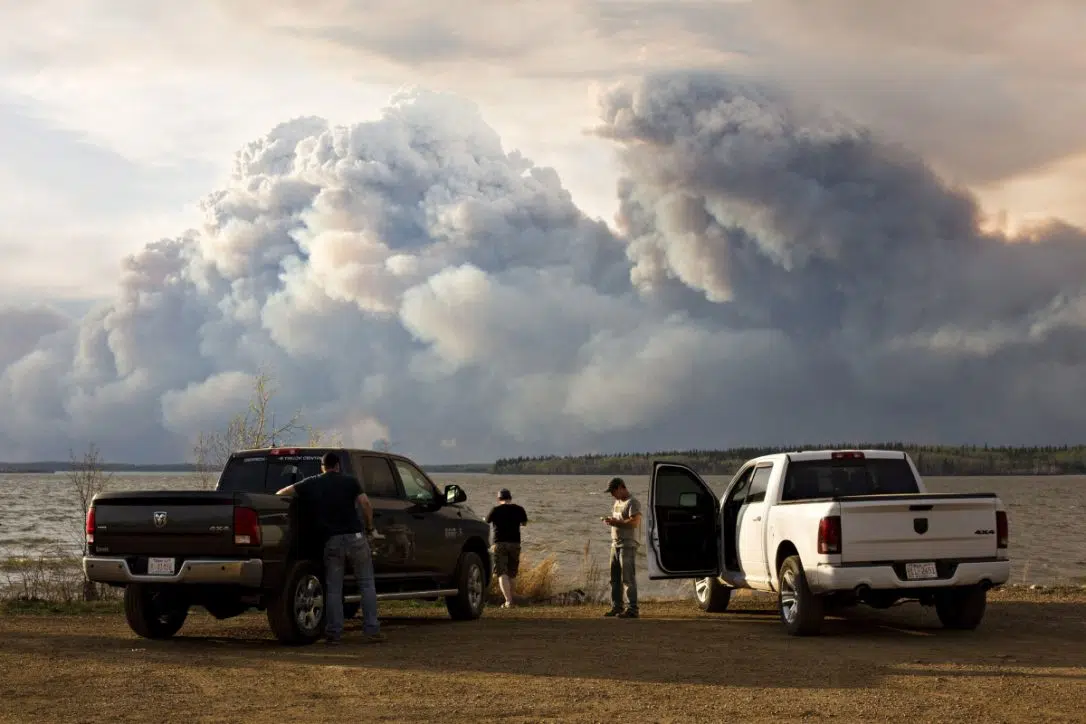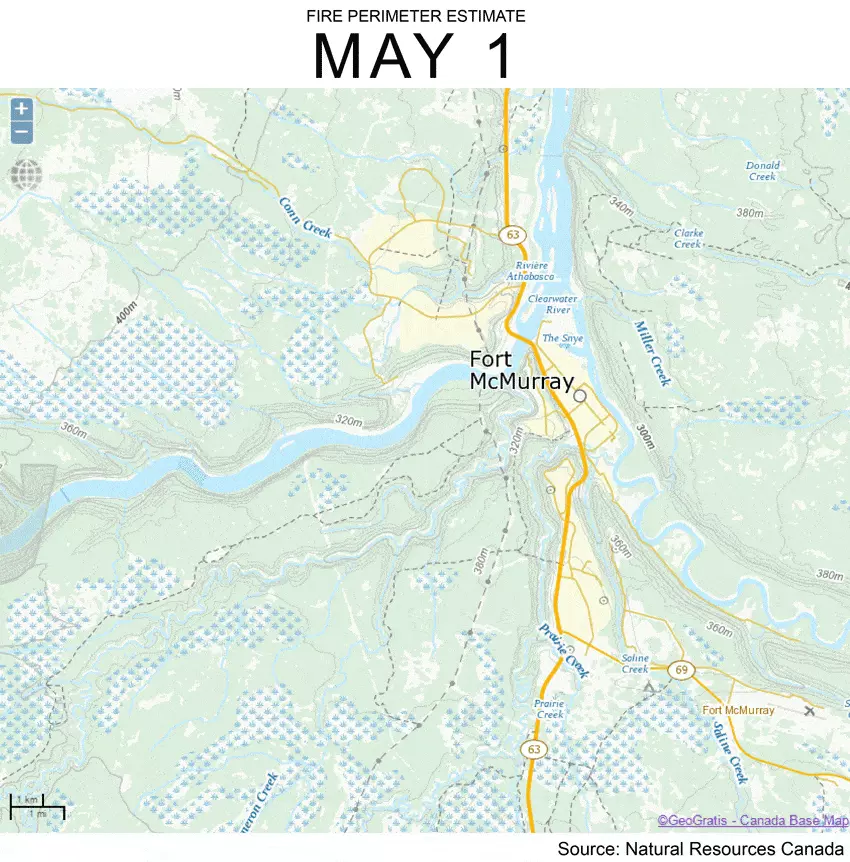
Crews scramble as Fort McMurray fire explodes in size, continues to threaten
FORT MCMURRAY, AB — A wildfire that has devastated parts of Fort McMurray has exploded in size, and officials say they are now water bombing the city to keep it from being overwhelmed by flames.
Officials could not update the number of structures that have burned — already at 1,600 — saying crews have not had the time.
“This is an extreme fire event,” Chad Morrison of Alberta Forestry told reporters at a briefing in Edmonton on Thursday.



